Does the therapeutic sound of the handpan call to you, stirring something deep within? Are you eager to create melodies that reflect your emotions and resonate with your soul?
Learning handpan chord progressions is a beautiful journey, and with a few helpful tips and tricks, you can start crafting your music. Many beginners feel overwhelmed by the wide range of chords and rhythms, but with the right guidance, you can easily master this incredible instrument.
In this blog, we'll explore fundamental techniques to kickstart your handpan chord progression journey and open the door to a world of melody. Whether you want to express your feelings through music or simply enjoy the process of learning, this guide will provide you with the tools you need to succeed.
What are Handpan Chord Progressions?
Handpan chord progressions are sequences of chords, typically consisting of 3 or 4 chords. They can include a combination of major and minor chords and are usually represented using Roman numerals (I-VII, corresponding to 1-7). Major chords are written in uppercase, while minor chords appear in lowercase.
These progressions allow players to create melodies that resonate with the instrument's unique tuning. Mastering chord progressions helps you craft more expressive music and improves your improvisation skills. However, before diving into handpan chords, it's essential to have a basic understanding of handpan.
Here are key fundamentals to know before learning handpan chord progressions:
- Instrument Familiarity: Understand the layout of your handpan, especially the central note and surrounding tones. It is crucial for working with scales and chords.
- Striking Technique: Learn how to strike the handpan, focusing on gentle and effective movements. Proper wrist position and relaxed hands are essential for producing clean sounds.
- Music Theory Basics: Understanding core concepts like scales, chords, and rhythm. A solid foundation in theory helps construct and understand chord progressions.
- Listening Skills: Develop your ability to actively listen to different musical styles and progressions. This sharpens your ear for melody and harmony, enhancing your overall musicality.
The above are a few essential fundamentals about handpan that you must know before learning the chords. Once you are familiar with the basics, it’s time to try your hands on the instruments and learn some simple progressions.
How to Learn Handpan Chord Progression for Beginners?
Understanding chord progressions is crucial for any handpan player looking to develop musicality and create beautiful compositions. Chord progressions are sequences of chords played in a specific order, forming a piece's harmonic foundation.
Learning a few essential chord progressions for beginners can significantly enhance your ability to improvise and play confidently. Here’s how you can start learning chord progressions on the handpan.
If you're new to chord progressions, getting comfortable with basic chords on your instrument first is essential. Understanding how individual chords are formed, such as major and minor chords, will give you the foundation needed to build more complex progressions.
For example, if you're playing on the D minor scale, you must know how to play D minor, A minor, F major, and other fundamental chords. This will make it easier to follow along when learning progressions.
Most handpan players often refer to chords by their number in the scale, known as the Roman numeral system. This allows you to play progressions regardless of your handpan scale.
For instance, the first chord (I) in D minor is D minor itself. The sixth chord (vi) would be B-flat in the D minor scale. Learning this system will help you easily transfer knowledge between scales.
A great way to begin is by practicing popular chord progressions, which form the backbone of many songs across various genres. These patterns will help you understand how handpan chords work together and develop a sense of musical flow.
- 1-6-3-7 progression: In D minor, this translates to D minor (1), B-flat (6), F major (3), and C major (7). This creates a smooth and melodic flow.
- 1-5-6-7 progression: Another popular progression where you move through D minor (1), A minor (5), B-flat (6), and C major (7). It creates a dynamic feel with a mix of minor and major chords.
Playing these progressions will train your fingers and your ear to recognize the harmonic structure.
Once you've mastered the basics, it's time to challenge yourself with new and varied chord progressions. Step beyond the usual patterns and explore different combinations to expand your musical creativity. Experimenting with less common progressions can help you discover unique sounds and enhance your understanding of harmony.
Once you’re comfortable with playing chord progressions, include small melody lines between the chords. This not only adds texture but also helps bridge the transitions smoothly. Many handpan players begin to introduce melodic notes that naturally fit into the progression, giving the music a more dynamic and expressive feel.
Following these steps and consistently practicing will help you quickly gain confidence and fluidity in your handpan playing. Start small, and as you progress, feel free to mix and match different progressions to create your unique sound.
Do you know there are several common mistakes that beginners often make while learning the handpan? Identifying and understanding these pitfalls can help you smoothly progress your musical journey.
What Common Mistakes Do Beginners Make When Learning Handpan Chord Progressions?
When starting with handpan chord progressions, it's easy to stumble into a few challenges that can slow your progress. Recognizing these mistakes early on can help you avoid them effectively and keep your musical exploration on track.
Here are a few common mistakes and how to avoid them to keep your learning smooth and enjoyable.
- Tackling Complex Progressions Too Soon
Diving straight into advanced chord progressions can feel overwhelming and lead to frustration. Instead of trying to master a complicated progression all at once, break it down into smaller, manageable sections. Practice each section slowly until you're comfortable, and then start piecing them together.
- Skipping Slow Practice
Speed comes with practice, but many beginners rush through progressions. Start slowly to ensure precision and muscle memory. As you get more confident, gradually increase the tempo. Slow practice builds clarity and reduces mistakes.
- Not Recording Your Sessions
Recording your practice is a game-changer. It allows you to hear mistakes you may not notice while playing, like hitting the wrong note or messing up the timing. Reviewing your recordings helps pinpoint areas for improvement and ensures that your playing sounds dynamic and expressive rather than flat.
- Neglecting Dynamics
Handpan playing isn’t just about hitting the right notes but also how you hit them. Pay attention to the dynamics (soft and loud tones) to give your chord progressions depth and emotion. Recording yourself can also help assess if your dynamics need work.
- Inconsistent Practice
Progress is hard to maintain without consistency. A structured practice routine makes all the difference. Start with short sessions and gradually increase the complexity as you improve.
By staying mindful of these common mistakes and implementing a thoughtful, step-by-step approach, you'll develop smoother, more accurate handpan chord progressions and accelerate your learning process.
Final Note!
These tips are just beginning your journey to mastering handpan chord progressions. Hopefully, they have helped you start your handpan learning journey and allowed you to explore your creativity.
With the right guidance and support, you can elevate your skills and enhance your experience. At Sound Artist, our experienced mentors will guide you and help you through the challenges to make learning music more fun and smooth.
Why wait to create the melodies that resonate with your soul?
Schedule a 30-minute handpan session with us and join a community of passionate creatives. Let’s make music together and bring your unique sound to life!


